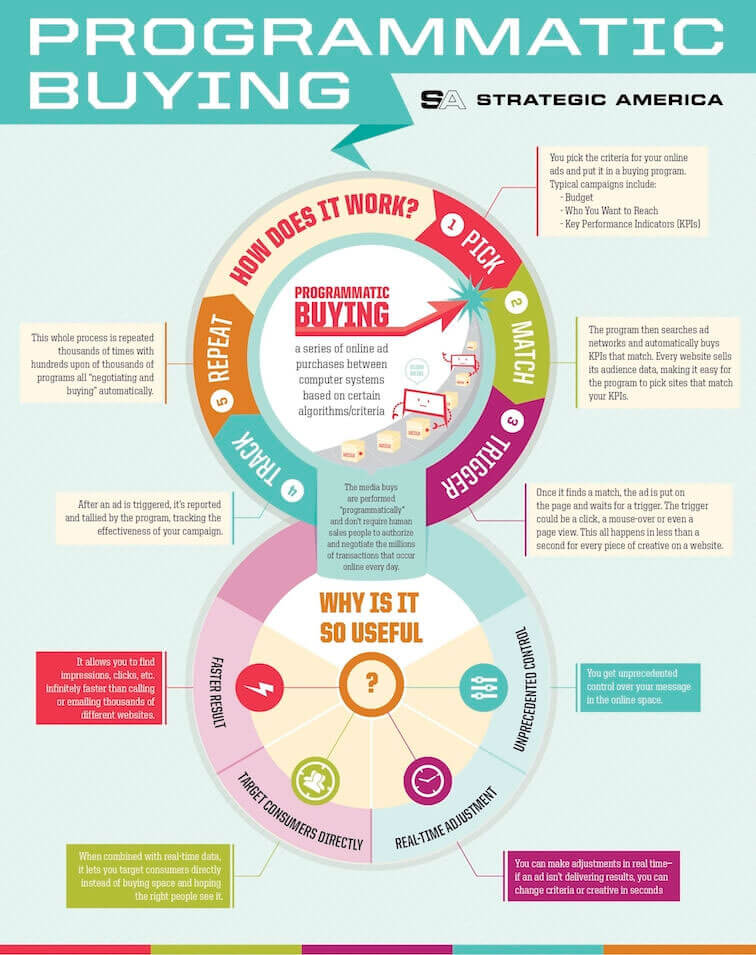The current state of the consumer-brand relationship lends itself to digital marketing strategies that cross channels, devices, and audiences, analyzing performance in real time for constant optimization. When done properly, you’ll increase scale and decrease ad spend, promoting products and services on the digital platforms that will yield the highest conversion rates.
However, creating a successful digital marketing strategy is not easy. Without the help of an experienced strategist at a digital marketing company, implementing an effective strategy can be daunting and nearly impossible. Many brands blindly enter into a cookie-cutter strategy and end up throwing away their ad dollars on campaigns that don’t yield the results they originally set out to achieve. If you’ve ever asked yourself any of the following questions, it’s probably time to seek out help from a digital marketing company that can provide you with some answers:
- “What strategies are essential to achieving my intended marketing objectives?”
- “How can I tell which tools are appropriate to solve certain problems?”
- “What do I really need to get started, grow and develop my digital marketing strategy?”
- “After having tested an initial strategy, how am I going to be able to fine tune my strategy so that the digital tactics that are ideal for my brand are implemented?”
- “Where should I start, with all the information I have at my fingertips?”
4 Essential Components of a Digital Marketing Strategy
Before diving into the three keys to developing a digital marketing strategy, it’s critical that you understand the essential components required to form the base of an efficient strategy. Every effective digital marketing strategy includes the following elements:
1. A Defined Target
If you’re not clear on who you want your ads to reach, you shouldn’t bother wasting your ad spend on a digital marketing campaign without a clear objective. It may seem like a no-brainer, but many brands continue making the mistake of defining their total addressable market as everyone and anyone that they can reach.
The first step in creating any digital marketing strategy is to clearly define the audience you plan on targeting. Although marketing before the onset of the internet tried to reach as many consumers as possible with a single message via mass media channels like TV and radio, this will yield less than satisfactory performance and require an exorbitantly large marketing budget.
Technology and the way in which consumers interact with brands have changed, so your marketing strategy should too. You can no longer, nor should you, “use a sledgehammer to crack a nut.” Be certain that you dedicate time to clearly defining your buyer persona.
2. Identify Optimal Channels
If you’ve determined who your potential customers are, it’s easier to identify the types of media with which they’re most likely to interact. There are dozens of digital media channels: email marketing, social media, chat bots, landing pages, in-app, etc. Some are good for increasing conversions, others are excellent for generating engagement, and there are some that stand out for their ability to increase brand awareness. Regardless of which channels you opt for, implementing an omni-channel approach is essential to reach all current customers and uncover new leads.
3. Gripping Creative
After deciding to who and where your digital marketing will be directed, you have to make sure that your creative grabs the user’s attention. Some advertisers think that it’s enough to simply put together a nicely written caption and add an image before publishing content. However, in today’s highly-saturated online ecosystem this couldn’t be further from the truth.
The overabundance of messages appearing across banners, search engines, and social networks forces brands to design creatives that will break through the noise and be noticed by their audience. To create a gripping creative it’s essential to:
- Write attractive copy
- Use appropriate fonts and colors
- Design motivational calls to action
- Choose pictures or videos that tell a story to which your consumer can relate
4. A Programmatic Partner
After you’ve addressed the above components of your digital marketing strategy, you have to tie it all together and make sure that your campaigns are properly executed. The best way to make sure that the proper advertisements are arriving to the right people at the right time is undoubtedly through a programmatic ad buying campaign through a trusted partner like Digilant.
Having a reliable programmatic partner allows you to seamlessly implement campaigns with both incredible scale and precise targeting, all while guaranteeing transparent media buying, paying for impressions based on the ROI that they’ll yield.
3 Keys to Successful Digital Marketing
Having the above components will provide a structural base for your digital marketing, but if you truly want to compete and create a sustainable strategy, you and the digital marketing company with which you partner will have to do the following in your next campaign:
1. Create Valuable Content
Your business relies on users buying their products and services in order to grow, but if you think that your leads are going to just directly input your URL into their search engine and begin browsing your products, you’re sorely mistaken. Today’s digital marketing strategies have evolved to implement content that drives leads down the funnel.
A complete stranger is delivered your content because it helps solve a problem that his user behavior indicated he might face. The content must then educate this user and spark an interest to seek out more knowledge, now considered a warm lead until he or she is further educated on how your product or services are a solution to their problems, becoming a customer.
Content marketing has become an imperative digital marketing strategy with nearly six time higher website conversion rates for adopters than non-adopters, and more and more marketers are catching on. According to the Content Marketing Institute, 70% of B2B marketers say that they are producing more original content this year than they had in 2016.
2. Design with Mobile in Mind
Once you’ve created valuable content, you must adapt it for all media channels that your campaign will touch. Regardless of how niche the audience is that you’re trying to reach are, you can guarantee that most of them will be using a cellphone, 95% of users in the U.S. to be exact.
Mobile usage has grown and mobile commerce is becoming a vital piece to the digital marketing puzzle. are displayedcorrectly and loaded in the places where you have placed them. Whether designing for native in-app, banners, interstitials, or simply your website, your brand’s digital presence must be fully optimized for mobile in order for your campaigns and following ROI to be optimal.
One way to make sure of this is to design with a mobile-first mindset, meaning your creative and copy are initially made for mobile environments and then adapted for other devices.
3. Make Decisions Backed by Data
One of the most common mistakes that many antiquated digital marketing companies fall into is making decisions based purely off of their team’s opinion rather than analyzing data on past performance to make better decisions moving forward. If you don’t have your campaigns tracked and haven’t set KPIs to assess them, your marketing will remain stagnant and your business will suffer.
If you’re to focus on only one of these three keys to digital marketing, your efforts will be best spent leveraging your data to drive these metrics. Combining first party data from your CRM and the third party data available to you when working with a programmatic partner like Digilant, you’ll have the resources to meaningfully segment your targeting and penetrate all necessary media channels for optimal results in your next digital marketing campaign.
Interested in putting these keys to digital marketing to the test in your next campaign? Learn more about how Digilant can help get you there – or reach out to us today!


